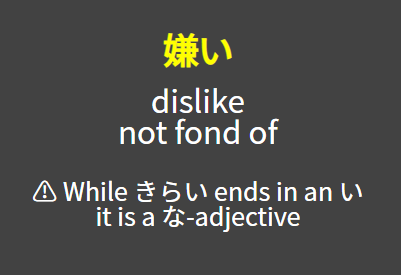Problem: Lack of grammar meaning explanation
As a near-daily user of this site for the past year, I’ve seen my grammatical ability improve drastically. However, I’ve noticed that bunpro misses out on a huge opportunity to make the learning process easier and less confusing.
While the nuance, usage, and examples provided for each grammar point have gone a long ways in making it improving the learning process, I still find bunpro lacking in providing the context of how that grammar point works the way it does and how its components contribute to its overall meaning.
Sure, explaining how, for example, each version of ‘can’t be helped/can’t help but do’ is different helps, but I think it’s far more effective to provide a semantic breakdown of that grammar’s components - especially for the longer, more complex items.
Possible Solution: Semantic breakdown of grammar points
For grammar larger than say, ように/みたい…, breaking down the meaning of a grammar point would greatly help understand the subtle differences between grammar, as well as the role of components play in that particular grammars meaning. This is especially evident as one moves up into the N3 and N2 grammar points, where numerous permutations of こと, には, にも, ならない, ことはない, etc are put together in a single long grammar term.
Possible example:
Aに越したことはない [#525: nothing better than ~]
Meaning Breakdown: Aに越した[have gone beyond A] + ことはない[doesn’t happen]
By breaking down the meaning and roles of the pieces of such grammar points, its easier to start to grasp not only the grammar point itself, but all the grammar components that make it up. Thus, through this approach, it no longer feels like a new grammar – similar to how wanikani teaches the meaning of a word by showing how the meaning of the kanji and other words combine to it makes its overall meaning.
Ultimately, by adding a feature similar to the one described here (even just for some of the items), bunpro will play a key role in facilitating a more intuitive understanding of not just specific grammar points, but also the recurring themes and components that make Japanese structure what it is.





 by typing 注意 into the keyboard, lol. The Japanese IME is awesome.
by typing 注意 into the keyboard, lol. The Japanese IME is awesome.